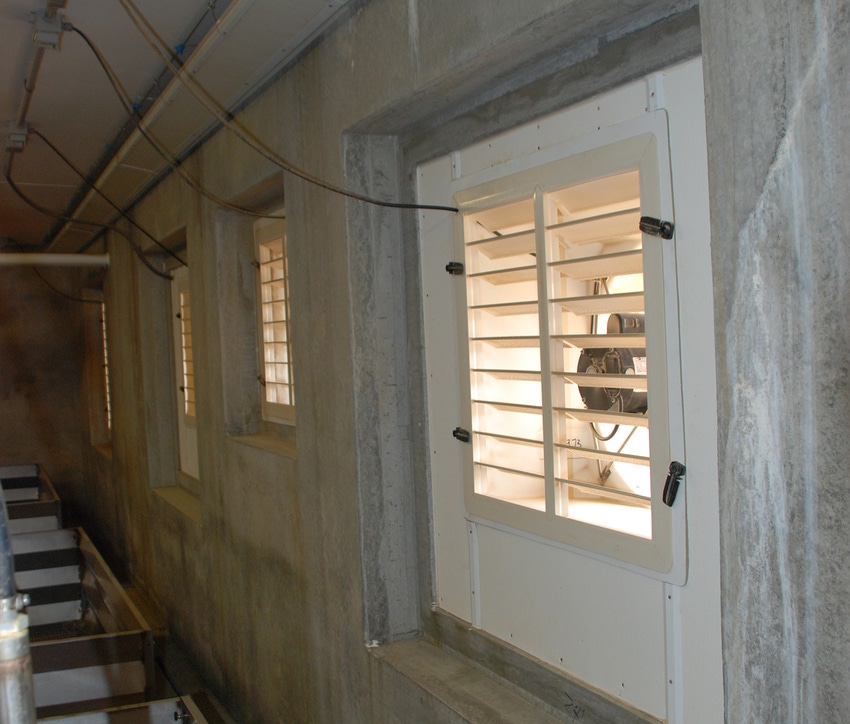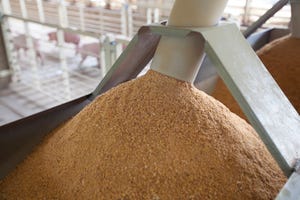Even just a 10% reduction in airflow can result in a 40-fpm reduction in tunnel airspeed.
August 22, 2018

By Brett C. Ramirez and Jay D. Harmon, Iowa State University Department of Agricultural and Biosystems Engineering
Since last month’s column dove into the relationship between fans and electricity usage, this column will focus on one of the common causes of reduced fan performance — dirty shutters (or sometimes referred to as louvers). While these seemingly simple, plastic “flaps” that cover everyone’s fans may not be the first thing that comes to mind when discussing ventilation system performance, they can however, cause severe reductions in airflow. As much as a 40% reduction!
Dirty shutters/louvers restrict airflow, and remember, as static pressure across the fan increases, the airflow capacity of the fan decreases and consequently, energy efficiency also decreases. Reduced airflow, especially in summer, can result in lower tunnel airspeeds and heat-stressed finishing pigs.
Shutters serve an important purpose in the winter, that is, blocking any drafts from the cold wind from entering the room through unused fans in order to maintain static pressure. On fans that are in-use they serve no useful purpose and reduce airflow by adding restriction. Nevertheless, shutters can and do collect dust over time. As that dust accumulates on the shutter blades, it makes the blades heavier; thus, fans have to work harder to pull the shutters open. This can usually be identified by fluttering or partially opening a shutter; however, even after cleaning, if the shutters are still not fully open, this usually indicates static pressure is excessive and there is another airflow restriction elsewhere in the facility.
While shutters may not appear to be “real dirty,” major airflow reductions can still occur. Even just 10% reduction in airflow can result in a 40-fpm reduction in tunnel airspeed. A 40% reduction in airflow yields a tunnel airspeed of only 240 fpm when the goal is about 400 fpm, resulting in the potential for heat stress.
Observing shutters is good practice because they can be an indication of poor ventilation performance. So, what can you do to keep fan motors and shutters clean? Follow these maintenance tips.
• Dirty motors tend to run hot, use an IR thermometer to compare several fan motors.
• Clean motors with forced air (do not pressure wash).
• Repeatedly hitting the shutters can knock dust loose (don’t break them) and/or use a brush to clean the blades.
• Replace broken or bent shutters.
• Lightly lubricate shutter bushings with a non-sticky substance to prevent or reduce friction.
• Bearings should be greased every four to six months.
• Motor pulleys can wear (becoming wider) from the fan belt over time.
• As the groove in the motor gets wider, the belt will ride lower in the motor pulley; hence, the fan spins slower and airflow is reduced.
• A mirror-like finish on the fan belt or if it sits at or below the edge of motor pulley, replacement may be needed.
• Check belt tension a few days following installation and then follow-up every four to six months.
References
• Ventilation In The Face Of High Energy Cost
• Poultry Housing Tips
• Swine Update
You May Also Like



